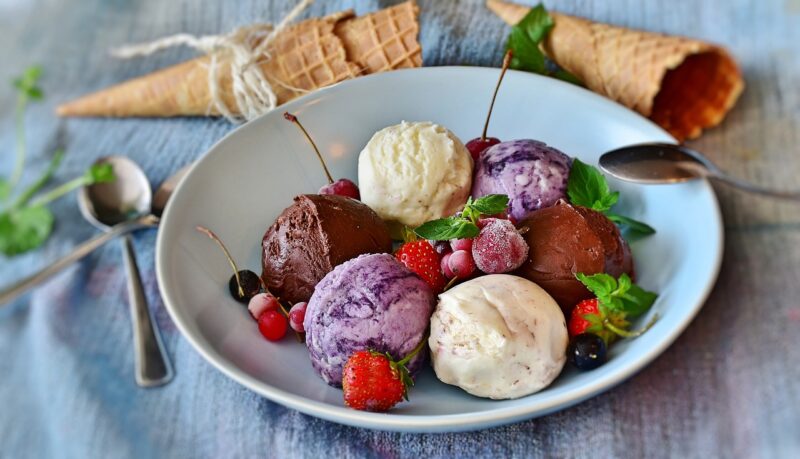The Fascinating World of Ice Cream Sculptures and Edible Artistry
November 17, 2024

Ice cream has long been a favorite treat that brings joy to people of all ages. However, in recent years, a delightful trend has emerged within the culinary world that elevates this beloved dessert to new artistic heights: ice cream sculptures. These mesmerizing creations not only showcase the incredible talent of artists and chefs but also reimagine our understanding of food as art. In this article, we will explore the captivating world of ice cream sculptures, dive into the techniques and tools used to create them, and discover the cultural significance and modern trends surrounding edible artistry.
1. The Art of Ice Cream Sculptures
Ice cream sculptures combine culinary skill with artistic vision, resulting in stunning masterpieces made entirely of ice cream. From whimsical figures and majestic animals to intricate floral designs, the range of possibilities is limited only by the artist’s imagination. Many renowned artists and chefs around the world dedicate themselves to this unique craft, pushing the boundaries of both design and flavor.
Ice cream sculpture is not a new concept; historical references can be traced back to ancient times when frozen desserts were molded into shapes for festivities. However, modern ice cream sculpture has taken on a more sophisticated and artistic flair, with artists experimenting with textures, colors, and flavors to create visually striking pieces that can both amaze and be consumed.
2. Techniques and Tools Used in Ice Cream Sculpting
Creating intricate ice cream sculptures requires a special set of techniques and tools, much like traditional sculpting. Here are some fundamental steps involved in the process:
- Choosing the Right Ice Cream: The first step in creating an ice cream sculpture is selecting the right type of ice cream. Artisans usually prefer a denser, high-fat ice cream that holds its shape well when sculpted. The ideal ice cream will have a creamy texture and rich flavor, making for a delicious finished product.
- Preparing the Ice Cream: Before sculpting, the ice cream needs to be softened slightly to make it easier to work with. This is typically done by letting it sit at room temperature for a few minutes or using a warm spatula to gently warm the surface, allowing the ice cream’s consistency to become more pliable.
- Using Sculpting Tools: Ice cream sculptors use a variety of tools for their creations, including spatulas, scoopers, knives, and even specially designed molds. Some artists also utilize heat sources, such as hot water or heated sculpting tools, to help shape and smooth the ice cream as they work.
- Layering and Coloring: To add depth and detail to the sculptures, artists often layer different flavors of ice cream. Food coloring or naturally derived colors can also be used to enhance the visual appeal of the piece, allowing for vibrant and eye-catching designs.
- Finishing Touches: Once the sculpture is complete, artists may add embellishments such as edible glitter, sprinkles, or even fresh fruits to enhance the overall presentation and taste.
The process of creating an ice cream sculpture can be both rewarding and challenging, as it requires patience, precision, and a great deal of creativity.
3. Cultural Significance of Ice Cream Sculptures
Ice cream sculptures have captivated not just culinary enthusiasts but also the general public, becoming a symbol of celebration and creativity. These unique installations have made their way into various cultural events and festivals worldwide, serving as both attractions and methods of expression.
During special occasions such as weddings, birthdays, and public festivals, ice cream sculptures present a memorable focal point that adds a touch of elegance and fun to the celebration. Furthermore, they serve as a culinary performance that delights guests, inviting them to engage with food in a way that transcends mere consumption.
In many cultures, food is a critical element of social gatherings and celebrations. Ice cream sculptures play a vital role in showcasing artistry and creativity, making them an essential part of food culture in different parts of the world. The juxtaposition of artistic expression and culinary delight encourages people to reimagine their relationship with food and highlights the value of communal experiences centered around eating.
4. Modern Trends in Edible Artistry
In recent years, the rise of social media platforms has propelled the popularity of ice cream sculptures to new heights. Food artists utilize platforms like Instagram and TikTok to showcase their creations, attracting followers and inspiring others to experiment with edible artistry. This digital era has led to several trends in the world of ice cream sculpture:
- Interactive Sculptures: Artists are increasingly creating interactive sculptures that invite guests to engage with their work actively. This often includes colorful, whimsical designs that not only look good but are also fun to eat.
- Fusion Flavors: Ice cream sculptors are experimenting with unusual and globally inspired flavors, combining traditional recipes with contemporary influences. This has resulted in an exciting fusion of tastes that tantalizes the palate while providing a visual feast.
- Sustainable Sourcing: Many contemporary artists focus on sustainability, sourcing ingredients locally and using eco-friendly practices in their work. This trend reflects a growing awareness of environmental issues and encourages consumers to support sustainable food practices.
- Themed Creations: Seasonal themes or cultural motifs drive creativity, as artists create sculptures that reflect festivals, holidays, or current events. This not only celebrates the theme but also encourages community engagement.
Through these modern trends, ice cream sculptures continue to be a prominent form of artistic expression, captivating audiences and inspiring creativity across the globe.
5. Notable Ice Cream Sculpture Artists
While numerous artists and chefs excel in the realm of ice cream sculpture, a few stand out for their remarkable contributions to this unique art form:
- Shirley Corriher: A chef and food scientist known for her innovative flavor combinations and sculptural work with ice cream. Corriher is known for her creative and mouth-watering presentations that entice the eye as well as the palate.
- Mandy McClure: An award-winning pastry chef, McClure specializes in creating intricate ice cream sculptures. Her work often features stunning detail, making them look almost too beautiful to eat.
- Nicolas Boulerice: A culinary artist recognized for his massive ice sculptures made entirely from ice cream. Boulerice showcases his talent through large-scale exhibits that push the limits of traditional dimensions and create awe-inspiring spectacles.
These artists not only bring ice cream sculptures to life but also inspire others to explore the intersection of culinary skills and artistic expression.
Conclusion
The world of ice cream sculptures inspires wonder, creativity, and delightful flavors. By merging culinary talent with artistic vision, ice cream sculptures transform a simple dessert into an extraordinary visual feast. As we continue to explore and celebrate this unique form of edible artistry, we uncover new possibilities that challenge traditional notions of food and artistry, leaving us with joyful, delectable experiences that linger in our hearts and memories. Whether it’s at a special event or a gallery showcasing food artistry, ice cream sculptures have established themselves as a celebration of creativity, taste, and culture — a true reflection of the fascinating world of ice cream artistry.







